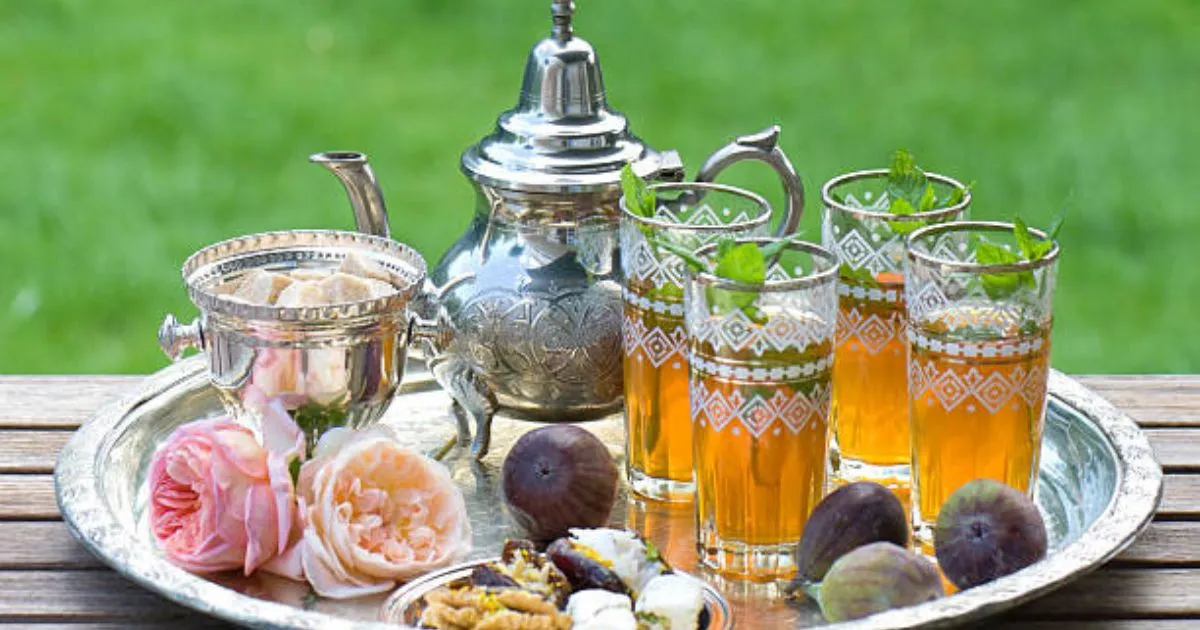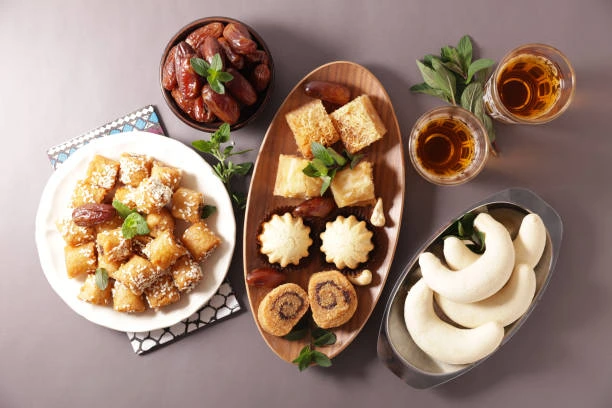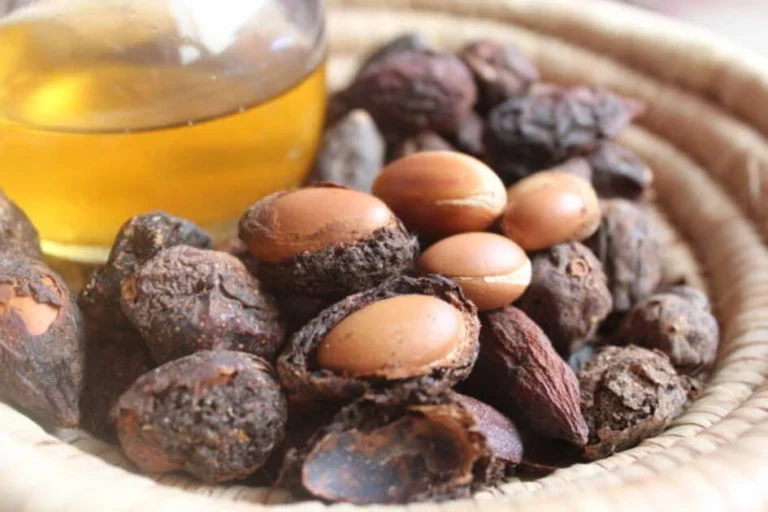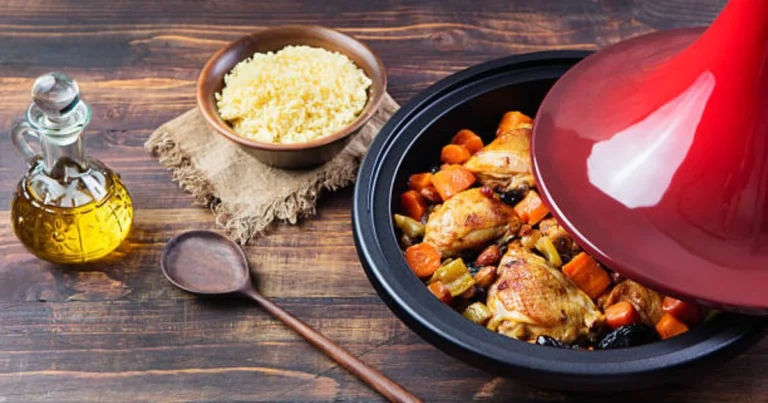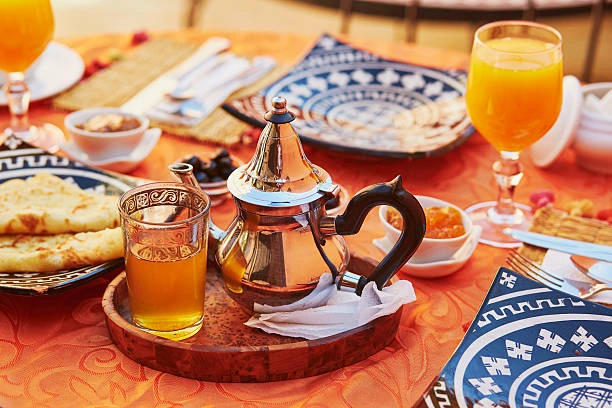Moroccan Mint Tea Secrets You Must Know
You’ve likely heard of the soothing and refreshing qualities of a perfectly brewed cup of Moroccan Mint Tea. This traditional beverage is a staple in Moroccan culture, symbolizing hospitality and warmth. As you explore the world of this delightful tea, you’ll discover its numerous benefits and the art of brewing it to perfection.
The significance of Mint Tea lies not only in its refreshing taste but also in its various health benefits, making it a must-try for anyone looking to experience the authentic flavors of Morocco. In this article, we’ll guide you through the secrets of brewing the perfect cup and uncover the advantages of incorporating Mint Tea into your daily routine.
Table of Contents
The Rich Heritage Behind Your Cup
As you sip on Moroccan mint tea, you’re not just enjoying a refreshing drink, but also experiencing a centuries-old tradition. This tea has been an integral part of Moroccan culture for centuries, serving as a symbol of hospitality, friendship, and warmth. Understanding its cultural significance and historical origins can deepen your appreciation for this beloved beverage.
The Cultural Significance in Moroccan Society
Moroccan mint tea plays a vital role in the daily lives of Moroccans. It’s a drink that’s always present during social gatherings, business meetings, and family reunions. The act of serving tea is considered a sign of respect and hospitality.
In Moroccan culture, the preparation and serving of tea are considered an art form, with the tea maker (known as the “shay”) taking great pride in their ability to prepare the perfect cup.
Historical Origins and Evolution
The history of Moroccan mint tea dates back to the 19th century when green tea was first introduced to Morocco from China. The Moroccans adapted this new beverage to their taste by adding fresh mint leaves and sugar, creating a unique flavor profile that’s now synonymous with Moroccan culture.
Over time, the preparation and serving of Moroccan mint tea have evolved, but its core significance as a symbol of hospitality and warmth has remained unchanged.
| Aspect | Cultural Significance | Historical Origins |
|---|---|---|
| Role in Society | Symbol of hospitality and friendship | Introduced from China in the 19th century |
| Preparation | Considered an art form | Adapted to local tastes with mint and sugar |
| Serving | Sign of respect and warmth | Evolved over time, retaining core significance |
| Impact | Unites people during gatherings | Became an integral part of Moroccan identity |
Essential Ingredients for Authentic Moroccan Mint Tea
The foundation of a perfect cup of Moroccan Mint Tea lies in its essential ingredients. To create an authentic experience, you’ll need to focus on three key components: the green tea base, fresh mint leaves, and sugar.
Selecting the Perfect Green Tea Base
Chinese Gunpowder Tea is traditionally used for Moroccan Mint Tea due to its strong, robust flavor. However, you can experiment with other green teas if Gunpowder is not available.
Chinese Gunpowder Tea vs Alternatives
Gunpowder Tea’s rolled leaves unfurl during brewing, releasing a rich, slightly smoky flavor. Alternatives like Sencha or Dragon Well can offer a lighter taste, but may alter the traditional character of the tea.
Finding and Storing Fresh Mint Leaves
Fresh mint is crucial for the tea’s refreshing flavor and aroma. Look for spearmint or peppermint varieties, and store them in a cool, moist environment to keep them fresh.
Identifying the Best Mint Varieties
Spearmint is the most commonly used variety in Moroccan Mint Tea, offering a sweet, mild flavor. Peppermint can be used for a stronger taste, but be cautious not to overpower the tea.
The Role of Sugar in Traditional Preparation
Sugar is an integral part of Moroccan Mint Tea, balancing the bitterness of the green tea and the cooling effect of the mint. Traditionally, sugar is added generously to the tea during brewing.
| Ingredient | Traditional Choice | Alternative Options |
|---|---|---|
| Green Tea | Chinese Gunpowder Tea | Sencha, Dragon Well |
| Mint Leaves | Spearmint | Peppermint |
| Sweetener | Sugar | Honey (optional) |
Traditional Equipment for Your Tea Ceremony
To host a traditional Moroccan tea ceremony, you’ll need the right equipment to create an authentic experience. The traditional setup not only adds to the ambiance but also enhances the overall experience of enjoying Moroccan mint tea, known for its numerous Moroccan mint tea benefits.
The Berrad: Your Essential Moroccan Teapot
The Berrad is a traditional Moroccan teapot, typically made from silver or tin, which is used to brew and serve tea. Its long spout allows for a smooth, controlled pour, creating the signature foam on top. The Berrad is not just functional; it’s also a decorative piece that reflects Moroccan craftsmanship.
Authentic Serving Glasses and Presentation
Moroccan mint tea is traditionally served in small, decorative glasses. These glasses are not only aesthetically pleasing but also help to bring out the flavors and aromas of the tea. The presentation is an integral part of the tea ceremony, with the glasses arranged on a tray, often accompanied by sugar.
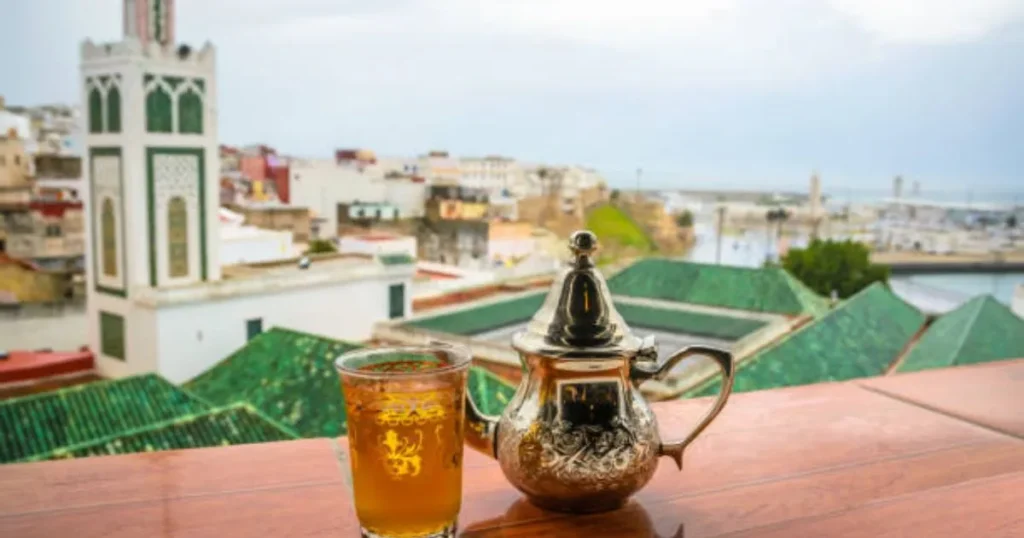
Alternative Equipment for Home Brewing
While traditional equipment is preferred, you can still enjoy Moroccan mint tea with modern alternatives. A stainless steel or glass teapot can replace the Berrad, and regular tea glasses can be used for serving. The key is to maintain the traditional spirit and enjoy the benefits of this refreshing tea.
Step-by-Step Moroccan Mint Tea Recipe
With its rich aroma and refreshing taste, Moroccan Mint Tea is a beverage worth mastering. To brew the perfect cup, you’ll need to follow a series of steps that have been passed down through generations in Morocco. This traditional recipe is not just about the ingredients, but also about the technique and the cultural significance behind it.
Step1: Preparing Your Tea Base
To start, you’ll need to prepare your green tea base. Moroccan Mint Tea typically uses a strong green tea, such as Gunpowder tea, which holds its flavor well against the freshness of mint.
Water Temperature Secrets
The ideal water temperature for brewing green tea is between 160°F and 170°F. Using water that’s too hot can result in a bitter taste, so it’s essential to get this step right. Use fresh, filtered water to prevent any off-flavors.
Step2: The Art of Washing the Tea Leaves
Washing the tea leaves is a crucial step in preparing Moroccan Mint Tea. It involves rinsing the tea leaves with hot water to remove any bitterness and awaken the flavors. This step ensures your tea is smooth and refreshing.
Step3: Adding Mint and Sugar Properly
After washing the tea leaves, it’s time to add fresh mint leaves and sugar to taste. The traditional method involves using a generous amount of mint and sugar, but you can adjust these to your liking. The key is to balance the flavors so that the tea is neither too sweet nor too minty.
Step4: Mastering the Steeping Process
The steeping process is where patience comes into play. Allow the tea to steep for the right amount of time to bring out the perfect balance of flavors. The traditional Moroccan Mint Tea recipe involves steeping the tea for a few minutes before serving.
By following these steps, you’ll be well on your way to brewing a delicious cup of Moroccan Mint Tea that captures the essence of Moroccan hospitality.
The Secret Pouring Technique Every Tea Lover Should Know
Mastering the art of pouring Moroccan Mint Tea is a skill that elevates your tea-serving experience. The way you pour the tea can enhance its flavor, presentation, and overall enjoyment. In this section, we’ll explore the techniques that make a difference.
Achieving the Perfect Foam Crown
Creating the perfect foam crown is crucial for an authentic Moroccan Mint Tea experience. To achieve this, you need to pour the tea from a height, allowing it to cascade into the glass below. This action incorporates air into the tea, creating a silky foam on top.
Tips for the perfect foam:
- Pour from a height of about 12 inches.
- Use a steady hand to avoid splashing.
- Practice makes perfect; the more you pour, the better you’ll get at creating that ideal foam.
The Three-Times Pouring Ritual and Its Meaning
The three-times pouring ritual is a significant part of Moroccan tea culture. It symbolizes hospitality and respect for the guests. When you pour the tea three times, you’re not just serving a drink; you’re showing your guests that you value their company.
Common Pouring Mistakes to Avoid
To master the pouring technique, it’s essential to avoid common mistakes. These include pouring too slowly, which can result in a lack of foam, and pouring too quickly, which can lead to spills.
Mistakes to watch out for:
- Pouring from too low a height.
- Not holding the teapot steady.
- Pouring too much tea into one glass.
By mastering the pouring technique, you’ll not only enhance the flavor and presentation of your Moroccan Mint Tea but also connect with the rich cultural traditions behind it.
Regional Variations You Can Try at Home
As you explore Moroccan Mint Tea, you’ll discover that its preparation varies significantly from one region to another. This diversity is a reflection of the rich cultural heritage and the adaptability of the Moroccan people.
Northern Moroccan Style with Herbs
In the northern regions of Morocco, Moroccan Mint Tea is often infused with herbs such as sage or thyme, giving it a unique flavor profile. This variation is not only delicious but also leverages the medicinal properties of these herbs. To try this at home, simply add a few sprigs of your chosen herb to the tea during the steeping process.
Southern Desert Tradations and Adaptations
The southern desert regions of Morocco have adapted Moroccan Mint Tea to their local tastes and ingredients. Often, the tea is made stronger and sweeter to combat the harsh desert climate. You can replicate this by adjusting the amount of sugar and green tea leaves used in your preparation. Some desert communities also add a pinch of local spices to give the tea an extra layer of warmth.
Modern Urban Moroccan Tea Innovations
In urban areas, Moroccan Mint Tea has seen a modern twist with innovations such as flavored syrups or the use of different types of mint. These variations offer a refreshing take on the traditional recipe and can be easily tried at home. For instance, you can add a dash of lemon or a drizzle of honey to give your tea a contemporary flavor.
Exploring these regional variations not only enriches your understanding of Moroccan Mint Tea but also allows you to experience the diverse Moroccan culture and its people. Each variation offers a unique taste and a story, making the tradition of drinking Moroccan Mint Tea even more special.
Health Benefits of Moroccan Mint Tea
Beyond its delightful flavor, Moroccan Mint Tea is renowned for its medicinal properties and health-enhancing effects. As you incorporate this traditional beverage into your daily routine, you’ll discover a range of benefits that can significantly improve your overall wellbeing.
Digestive Properties for Your Wellbeing
Moroccan Mint Tea is known for its digestive benefits. The combination of green tea and fresh mint helps soothe the stomach, reducing nausea and improving digestion. Drinking a cup after meals can aid in alleviating symptoms of indigestion and bloating, making it a great addition to your mealtime routine.
Antioxidant Content and Their Effects
The green tea base in Moroccan Mint Tea is rich in antioxidants, which play a crucial role in protecting your body against free radicals. These antioxidants help in reducing oxidative stress, potentially lowering the risk of chronic diseases such as heart disease and certain cancers. Regular consumption can contribute to a healthier you.
Traditional Medicinal Uses in Moroccan Culture
In Moroccan culture, mint tea has been used for centuries as a remedy for various ailments. Traditionally, it’s believed to help alleviate headaches, calm nerves, and even assist in managing stress. The tea’s calming effects can promote a sense of relaxation, making it a popular choice before bedtime to aid in a restful night’s sleep.
By embracing Moroccan Mint Tea, you’re not only enjoying a flavorful beverage but also tapping into a rich cultural heritage that values health and wellbeing. With its array of benefits, it’s a simple yet effective way to enhance your daily life.
Serving and Presentation to Impress Your Guests
Creating an authentic Moroccan Mint Tea experience at home involves more than just following the Moroccan Mint Tea recipe; it requires attention to detail in serving and presentation. The way you serve your tea can elevate the experience, making it a memorable occasion for your guests.
The Etiquette of Proper Tea Service
In Moroccan culture, serving tea is a sign of hospitality and respect. To serve tea properly, hold the teapot in your right hand, and use your left hand to support it. When pouring, hold the teapot high above the glasses to create a frothy top, a crucial element of the tea’s presentation. This technique not only chills the tea slightly but also aerates it, enhancing the flavor.
Traditional Accompaniments and Pairings
Moroccan Mint Tea is traditionally served with sweet treats like pastries, cookies, or biscuits. You can also pair it with savory snacks, such as nuts or olives, for a more contemporary twist. The key is to balance the flavors so that the tea complements the food. For a more authentic experience, consider serving your tea with traditional Moroccan sweets like ghriba or makroud.
Creating an Authentic Experience in Your Home
To recreate the authentic Moroccan Mint Tea experience at home, pay attention to the ambiance. Use colorful tiles, vibrant textiles, and intricately designed tea sets to create a warm and inviting atmosphere. You can also play traditional Moroccan music in the background to set the mood. By combining these elements, you’ll transport your guests to the bustling markets of Marrakech or the serene riads of Fez.
Conclusion: Mastering the Art of Moroccan Tea
You’ve now discovered the secrets of Moroccan Mint Tea, from its rich heritage to the traditional equipment and techniques used in its preparation. To truly master this art, practice is essential. Experiment with different moroccan mint tea recipes and regional variations to find your perfect blend.
As you continue to explore the world of Moroccan Mint Tea, remember that the moroccan mint tea benefits extend beyond its refreshing taste. This traditional beverage offers numerous health benefits, from digestive properties to antioxidant content.
Invite friends and family to share in the experience, and don’t be afraid to try new ingredients and techniques. With time and patience, you’ll become proficient in the art of Moroccan Tea, and the rewards will be well worth the effort.

